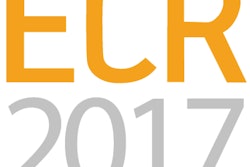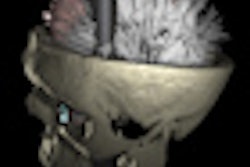SAN FRANCISCO - Preliminary research from the University of Pittsburgh shows that lung cancers originate in areas of the lung damaged by emphysema. The finding, presented at this week's American Thoracic Society (ATS) meeting, adds to evidence suggesting that a common underlying mechanism links the two diseases.
Previous research has established that emphysema can be a risk factor for lung cancer. Healthy alveoli have low levels of cellular turnover, but they tend to become inflamed in smokers, leading to the destruction of bronchioalveolar stem cells recruited to help repair the alveolar damage, explained Dr. Meghan N. Cooper from the University of Pittsburgh Medical Center (UPMC).
This understanding led Cooper and colleagues to propose that an emphysematous microenvironment contributes to oncogenesis. Research showing that lung cancers tend to begin in areas of the lung damaged by emphysema is a step in establishing a connection.
Cooper's findings were drawn from a retrospective cohort trial involving noncontrast diagnostic chest CT exams performed on 135 presurgical patients with known lung cancers. Sixty-one cases were drawn from the Pittsburgh Lung Cancer Screening Study (PLuSS). Another 74 originated from UPMC's cohort of individuals with stage I cancer. Stage I lung cancers accounted for most of the cases in the trial.
Several generations of CT scanner technology were used; most had at least 8-slice scanning capabilities. Patients were imaged at inspiration in a supine position, and CT slice thicknesses were from 1.25 mm to 5 mm. Tumor locations were identified in the upper, middle, and lower lobes of both lungs. The disease-free lung was used as a control.
Each lobe was evaluated using two measures of tissue density. Perc-910 is a value describing the percentage of the lung region that is less than -910 HU (a standard measure of tissue density acquired with CT). Perc-910 values are relative low in healthy lungs and higher in the presence of emphysema.
Hist-15 is also measured in Hounsfield units. It identifies the least-dense 15% of lungs. Hist-15 is higher in healthy lungs and lower among emphysematous tissue.
Based on these measures, Cooper established a correlation between tumor location and the extent of emphysematous involvement around the tumor.
Approximately 61% of the lesions resided in the upper lobes, where significantly high levels of emphysema resided, Cooper said. The upper regions were characterized by less heterogeneity as demonstrated by smaller statistical standard deviations and a higher kurtosis rate (another statistical measure) than other regions.
Comparisons between the lung containing the tumor and the contralateral lung failed to produce statistically significant Hist-15 or Perc-910 measures, she noted. Significant differences were identified in tissue heterogeneity in the region where the tumor resided compared to the same region of the contralateral lung, however.
Cooper and her colleagues believe this area of greater heterogeneity may be associated with oncogenesis. No other differences in the indexes of emphysema were found in other regions.
The trial was limited by its use of multiple CT platforms and the predominance of stage I cancers. Future research will focus on the clinically relevant microenvironment located concentrically around the tumors and on defining CT imaging parameters for measuring emphysema and its associated cancer risk, Cooper said.
Given their heightened risk, should patients with emphysema undergo low-dose CT screening exams? Such scans were advised for other high-risk individuals (those ages 55 to 74 who have smoked for 30 pack-years) in guidelines released May 20 by the American College of Chest Physicians (ACCP) and other groups. But the jury is still out for those with emphysema.
Pulmonologist Dr. David O. Wilson from UPMC, who was co-author on a 2008 paper establishing a link between emphysema and lung cancer, was a co-author on Cooper's paper as well. At the ATS show, he expressed his belief that emphysema is a major risk factor for lung cancer. Other researchers at the meeting argued that emphysema patients should undergo routine low-dose CT lung cancer screening.



















